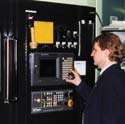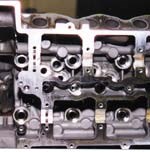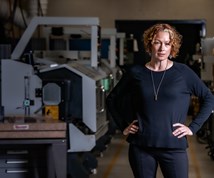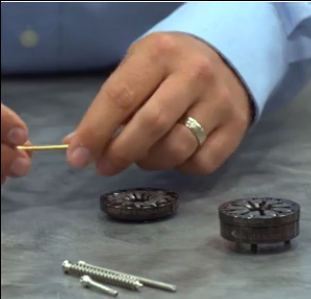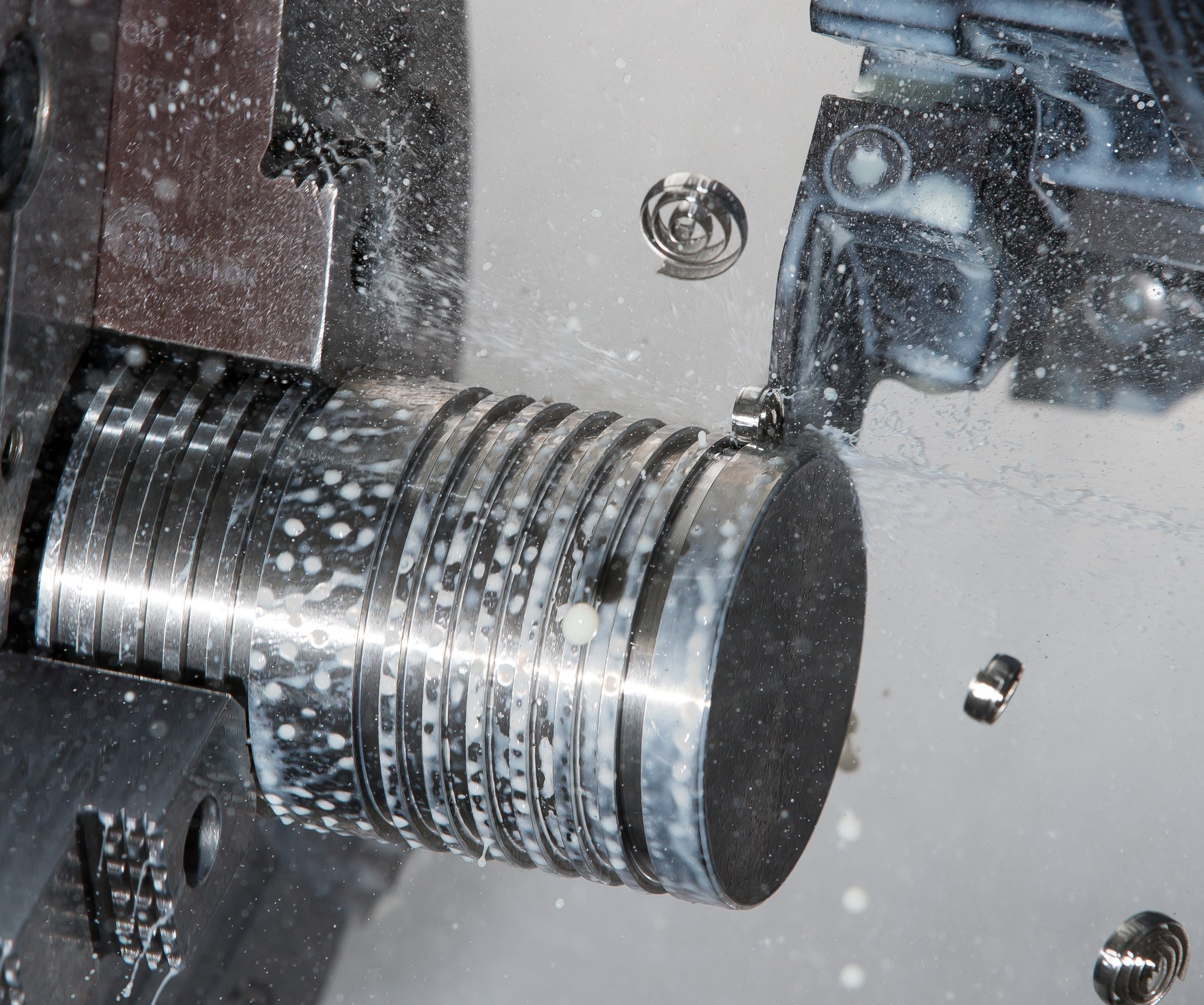Linear Motors Shorten Production Time
Linear motors account for part of the reason why DaimlerChrysler's Stuttgart, Germany, manufacturing facility has been able to nearly double the productivity of machining centers producing automotive cylinder heads.
Linear motors account for part of the reason why DaimlerChrysler’s Stuttgart, Germany, manufacturing facility has been able to nearly double the productivity of machining centers producing automotive cylinder heads. The company replaced more conventional machines with horizontal machining centers featuringGE Fanuclinear motors for X, Y, Z motion, with control coming from a GE Fanuc 161 CNC fast enough to keep up motor position through high speed moves. The high feed rate and high acceleration the linear motors make possible help reduce cycle times. DaimlerChrysler manufacturing personnel Thomas Brandstetter and Ingolf Kurschner analyzed the productivity improvement. They say the linear-motor-equipped machining centers now produce at a rate that would have required 11 traditional machines.
Ingersoll Milling Machine Company(Rockford, Illinois) supplied the six HVM600 linear motor horizontal machining centers for cylinder head production to DaimlerChrysler. The machines have traveled distances of 630 mm by 630 mm by 600 mm (X, Y, Z axes). A hydrostatically mounted main spindle attains outputs of 37.5 kW at speeds of up to 20,000 rpm. Workpieces are clamped to pallets measuring 630 by 630 mm2 on an NC turntable with a load capacity of 1,400 kg.
Featured Content
Four cylinder heads are secured simultaneously in a clamping device. In one continuous work process, the cylinder heads are extensively machined. End faces, screw contact faces and threads are milled. A total of 130 core holes must be drilled and the threads milled on each of four cylinder heads. For example, the main spindle requires 1.2 seconds to mill an M6 thread to a depth of 14.1 mm at a rotary frequency of 20,000 rpm and 700 mm/min. feed rate. The HSC machining center mills screw contact faces of 24 mm diameter with a diamond-coated face mill cutter at speeds of 20,000 rpm (corresponds to 150 m/min. cutting speed) and 5,200 mm/min. feed rate. Forty of these have to be machined on every cylinder head.
Before a toolchange takes place, all similar parts of the four cylinders are machined. During the toolchange, a laser beam verifies that the proper tool is being substituted. With its 32-bit RISC processor and high-cycle frequencies, the CNC system can process NC programming very quickly. Furthermore, it contains the well-developed look-ahead functions that are required for high speed feed.
The high speeds of these six machines allow Daimler Chrysler to produce 300 four-valve cylinder heads for four-cylinder engines daily. In conventional machining centers, 11 machines would have been necessary to produce the same quantity of components, thus requiring more personnel, larger factory floor space, more tools and equipment, maintenance and investment, machine interlinking, lifting gear and additional measuring devices.
The high acceleration power of the hydrostatically mounted main spindle enables the machines to achieve short cutting times. The spindle requires only 1.5 seconds to accelerate to a speed of 20,000 rpm. The linear motors’ high acceleration power and feed force also ensure minimum non-machining time. In rapid motion, they accelerate in the Z axis at 1.5 g (14.5 m/s2) and in the X and Y axes at 1 g (9.8 m/s2) to 76 m/min.
Even at these high speeds, the linear motors position the spindles in the entire work area to a degree of accuracy of approximately 5 microns. To further increase accuracy, glass scales are installed in all axes, and pretensioned roller guides direct the carriages in each axis.
优化后的一些para-meters探讨ical engineering, the HSC machining centers with GE Fanuc’s linear motors have proven very successful at shortening production times and increasing accuracy. Cutting figures and productivity levels has exceeded what the experienced machininsts at DaimlerChrysler had envisioned, as the machining centers now achieve uptime levels of more than 95 percent. In addition, the enclosed design of the linear motors protects the equipment.
RELATED CONTENT
Will Transmission Manufacturers Turn to Out-Of-Round Turning?
Out-of-round turning can be an efficient alternative to profile milling and grinding for polygon couplings that could replace traditional spline connections in automotive transmissions.
Scratching Surface Flaws With Automation
Machining parts complete on CNC multi-spindles, with automatic load and unload, is proving the key to nick- and scratch-free parts for this tier-two auto parts maker.
A 'HOLE' New Ballgame With Multi-Spindle Honing Systems
Automating the honing process is key to high-volume precision bore production with sub-micron accuracy.



